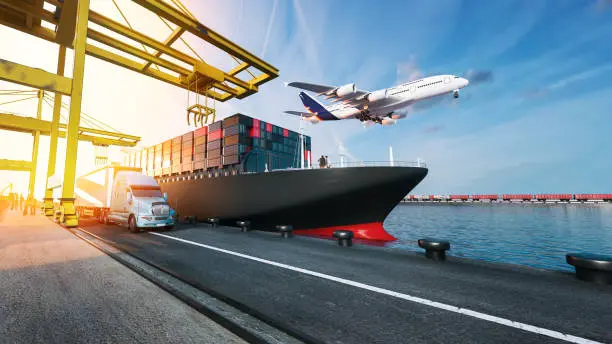
The Journey of Goods: Exploring the Dynamics of Delivery in Modern Commerce
- Admin
In the fast-paced world of modern commerce, the delivery of goods plays a crucial role in ensuring customer satisfaction, facilitating trade, and driving economic growth. From online orders to international shipments, the delivery process encompasses a complex network of logistics operations, transportation modes, and technological innovations. In this article, we'll delve into the intricacies of goods delivery, examine key factors influencing delivery operations, and discuss emerging trends shaping the future of delivery in global trade.
The Significance of Goods Delivery
Goods delivery is the final stage in the supply chain process, involving the transportation of goods from sellers to buyers. It encompasses various activities, including order processing, packaging, transportation, and last-mile delivery, all aimed at ensuring that products reach their intended recipients safely, timely, and efficiently. Efficient goods delivery is essential for meeting customer expectations, reducing lead times, and maintaining competitiveness in the marketplace.
Key Factors Influencing Delivery Operations
Several key factors influence the efficiency and effectiveness of delivery operations:
Speed and Timeliness: Speed and timeliness are critical considerations in delivery operations, particularly in e-commerce and retail sectors where customers expect fast shipping and on-time delivery. Optimizing delivery routes, leveraging express shipping options, and utilizing real-time tracking technologies help expedite delivery times and enhance customer satisfaction.
Cost Efficiency: Cost efficiency is a significant factor in delivery operations, with businesses striving to minimize transportation costs while maintaining service quality. Strategies such as route optimization, load consolidation, and utilization of multi-modal transportation modes help reduce shipping expenses and improve profitability.
Last-Mile Delivery: Last-mile delivery, the final leg of the delivery process from distribution centers to customers' doorsteps, presents unique challenges such as congestion, urbanization, and the need for timely and accurate deliveries. Innovations in last-mile logistics, including alternative delivery methods, autonomous vehicles, and delivery drones, are transforming the landscape of urban delivery and improving efficiency in last-mile operations.
Customer Experience: Customer experience is paramount in goods delivery, with businesses investing in user-friendly delivery platforms, responsive customer service, and transparent communication to enhance the overall delivery experience. Providing delivery options such as same-day delivery, click-and-collect, and flexible delivery windows cater to diverse customer preferences and increase satisfaction.
Emerging Trends in Goods Delivery
Several emerging trends are shaping the future of goods delivery:
E-Commerce Expansion: The growth of e-commerce and online shopping is driving demand for fast, reliable delivery services, with businesses investing in fulfillment centers, distribution networks, and last-mile delivery capabilities to meet customer expectations.
Sustainability: Sustainability is becoming increasingly important in goods delivery, with businesses adopting eco-friendly packaging, electric vehicles, and carbon-neutral delivery options to reduce environmental impact and meet consumer demand for sustainable practices.
Technology Integration: Technology integration is revolutionizing goods delivery operations, with advancements such as artificial intelligence, machine learning, and data analytics optimizing route planning, predictive maintenance, and demand forecasting in delivery logistics.
On-Demand Delivery: On-demand delivery services, enabled by mobile apps and digital platforms, are gaining popularity, offering customers convenience, flexibility, and instant gratification in goods delivery. On-demand delivery models are disrupting traditional delivery channels and reshaping consumer expectations for speed and convenience.
Conclusion
Goods delivery is a critical component of modern commerce, driving customer satisfaction, facilitating trade, and enabling economic growth. By understanding the key factors influencing delivery operations and embracing emerging trends in delivery logistics, businesses can optimize their delivery processes, meet evolving customer demands, and remain competitive in the global marketplace. As we continue to innovate and adapt to changing consumer preferences and technological advancements, let us strive to enhance efficiency, sustainability, and customer experience in goods delivery, ensuring seamless journeys for goods from sender to recipient.
